Drinking wine is an enjoyable hobby but is something that requires more attention than you might realize. For example, did you know that a vast majority of wine drinkers don’t use the right glasses or hold their wine glasses properly?
Well, “So what? Why does that matter?” I can imagine you asking. Well, wine glasses DO matter, especially holding them properly. Let’s take a deep dive into this subject to learn why this matters and get insight into multiple wine-glass-holding techniques.
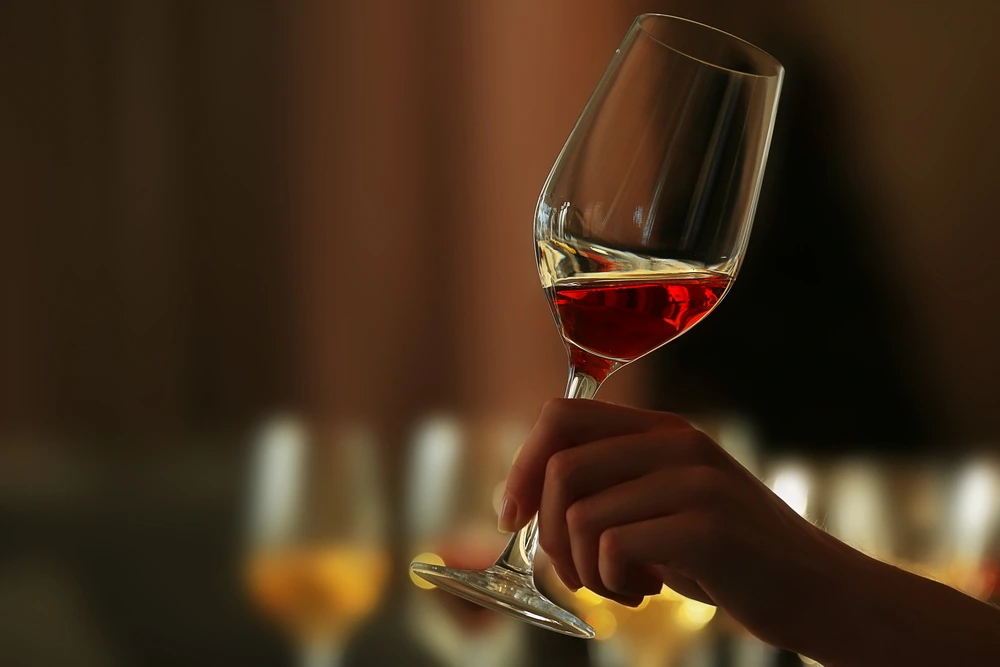
Why It’s Important to Hold Your Wine Glass Properly
Learning to hold your wine glass properly is essential for a few reasons.
Some of these are practical and can affect your wine quality, while others are simply etiquette issues.
We’ll discuss wine etiquette later on, but, for now, know that adequately holding your wine glass:
- Follows Wine Etiquette Rules: When you’re at a wine tasting with friends or having wine at a friend’s house, holding your wine glass properly can impress others with your etiquette knowledge. Obviously, impressing others shouldn’t be your main concern, but keeping in harmony with general wine etiquette is good practice.
- Minimizes Glass Damage: While you’re not likely to break your wine glass when holding it improperly, you might drop it if you use awkward techniques.
- Maintains Temperature: Improper glass-holding techniques can impact your wine’s temperature by warming it up with your hand: yes, that’s entirely possible.
While it’s not the end of the world to hold your wine glass improperly, it can affect your wine quality and make your tasting experiences a little uncomfortable.
Thankfully, proper techniques aren’t that complex to understand and can be learned in just a few minutes.
The Importance of Wine Glass Shapes and Sizes
Here’s something we know most wine fans don’t know: wine glass shape can affect wine aroma, oxygen reaction, and taste.
For example, tall white wine glasses typically have a narrower opening that minimizes unnecessary oxygen exposure and doesn’t affect its acidity. The thinner top also focuses the smell towards your nose and enhances the overall taste and your wine’s quality.
By contrast, red wines typically use broader glasses that expose the wine to oxygen and help enhance its smell, taste, and color. The wider top also helps the aroma spread more in the air, increasing its intensity and making your wine easier to enjoy.
Therefore, before choosing a wine glass, it is critical to understand the different wine glass parts to consider before you start drinking wine regularly.
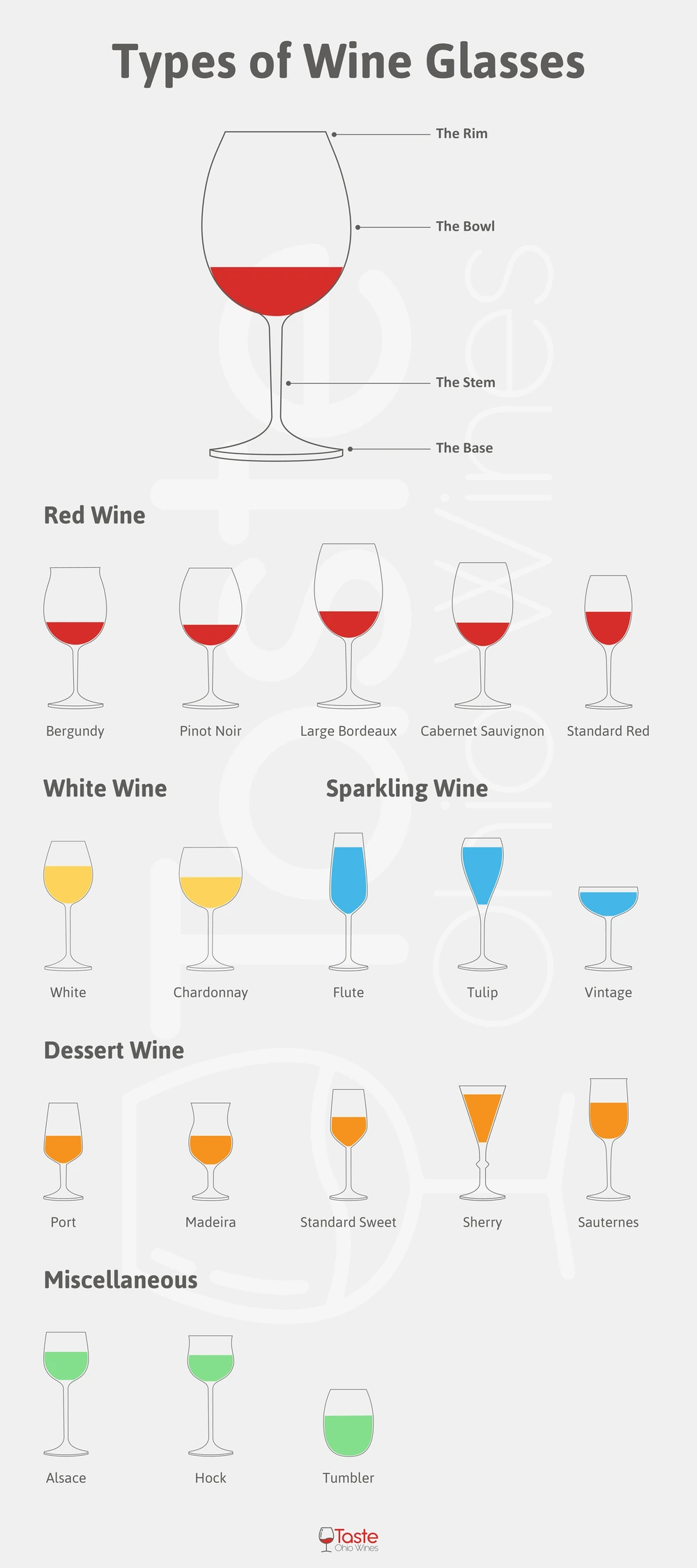
Share this Image On Your Site
The Anatomy of a Wine Glass
When discussing holding techniques for your wine glasses, we’ll openly discuss several wine glass parts.
Understanding these parts can streamline this experience and help you better understand what we’re talking about in this article.
Though you might know some of this information already, it’s worth taking a glimpse at it to refresh your memory or potentially learn something new.
The Base
A wine glass base is the bottom where it sits on a table. It is typically thicker than the rest of the glass to hold more weight.
It is also usually fairly wide, though that depends on the glass you own. The base isn’t as crucial as other wine parts when it comes to holding a glass.
However, it will come up from time to time, so knowing what it is can help you through this process.
The Stem
While not all wine glasses have a stem (we’ll get to that later), the stem is the most important thing to consider when holding a wine glass that has one.
Stems are where most of your holding techniques center because grabbing the glass here minimizes heat transfer and keeps your wine at a proper temperature
Later, we’ll discuss how to hold the stem like a pro.
The Bowl
The wine glass bowl, also known as the goblet (how medieval!), is where you pour your wine and where it rests while you drink.
It is obviously the largest part of the glass and varies in shape depending on the wine you enjoy.
As we mentioned before, white wines usually get narrower glasses to protect them from oxygen, while red wines serve best in wider bowls that better release the wine’s aroma.
The Rim
The rim is the bowl’s top or where the glass opens up for drinking and oxygen integration. Bowl and rim size are connected but may vary.
For example, broad wine glasses may narrow at the rim to restrict oxygen flow. As a result, you need to consider the rim as being just as crucial as the stem in many ways.
Choosing the properly sized rim can ensure the best experience for your particular wine.
Holding a Wine Glass Elegantly and With Style
Now we’re getting to the real meat of the article: how to hold your wine glass elegantly and with the proper style.
While these techniques also improve your wine’s quality and ensure it remains tasty, they also help you look and feel better while enjoying wine.
We’ll discuss how to hold wine glasses with and without stems and include multiple techniques in each section that help you better understand each.
How to Hold a Wine Glass With a Stem
Stemmed wine glasses are trendy because they help you best control your wine temperature and simply look nice.
They’re the most commonly used wine glasses at social gatherings and wine tastings and require a few different holding techniques.
Understand that you’ll mostly be holding the stem of the glass, so practice these methods below to get the best results for your needs.
1. Holding the Stem With Two Fingers and Your Thumb
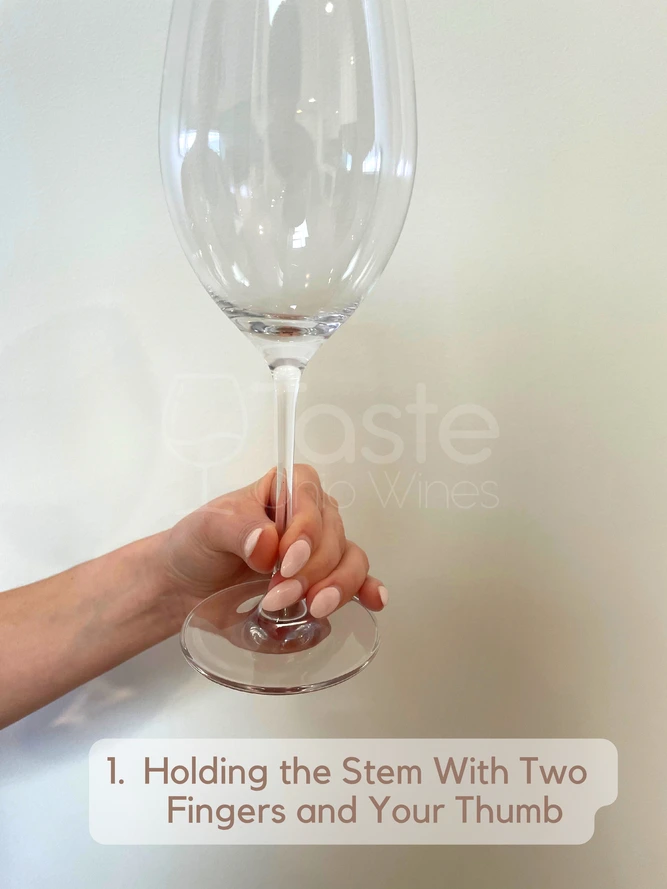
This technique is the most common option because it provides extra stability and strength and keeps your wine glass upright. Follow the steps below to utilize this technique:
- Place your middle and index finger on one side of the stem near the bottom
- Grip the other side of the stem with your thumb to hold it tightly
- Rest your other fingers on the base of the glass for extra stability
This technique works well because it takes your fingers away from the bowl and minimizes heat transfer. It also provides additional strength that stabilizes the glass.
Rest the stem between your index and middle finger with the thumb adding extra balance.
Rest your remaining fingers on the lower half of the stem. Place them close to the base for further stability.
2. Pinch With The Index Finger and Thumb
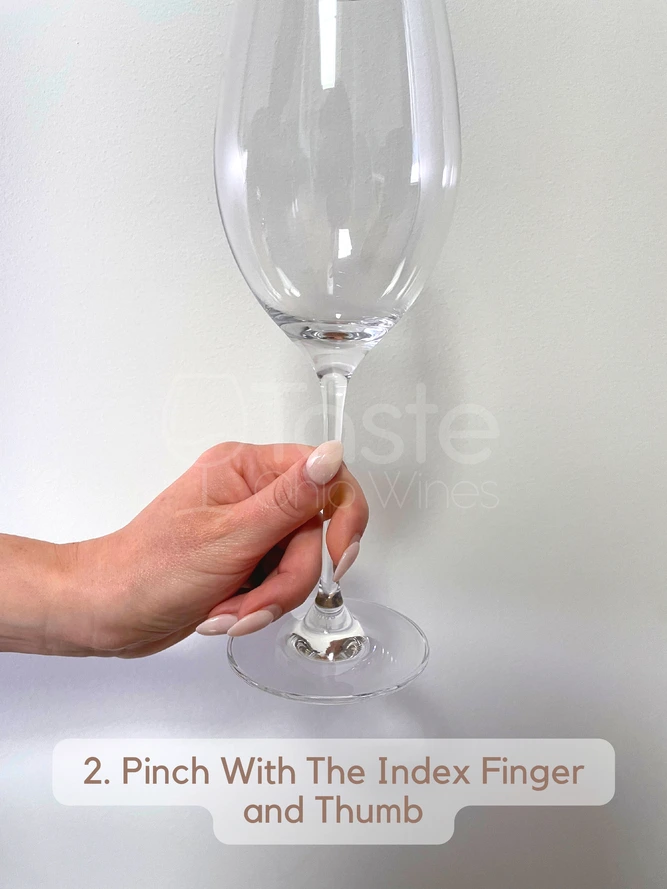
While the technique above should provide you with plenty of glass control, some people may want slightly looser and freer glass control. That’s where this technique is so helpful. Follow these steps:
- Place your hand towards the lower half of the stem near the base
- Wrap your index finger around the stem
- Balance the stem with your thumb to keep it stable
- Curl your remaining three fingers into your palm to keep them away
This method is helpful if you want a looser and more adjustable grip on your wine glass.
For example, if you feel like the first technique is too “tight,” this method may be a good choice.
3. Grab The Stem Above the Base
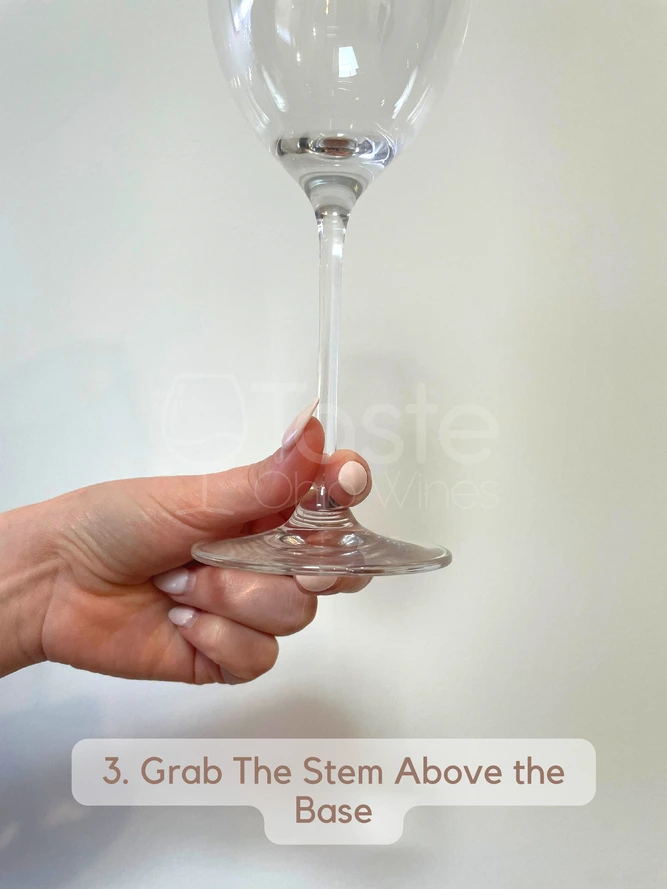
This technique is a bit more advanced than some and provides excellent glass control without affecting your wine temperature in any way. You use three fingers in this way:
- Pinch the glass stem just above the base’s top
- Place your middle finger just beneath the base’s bottom
- Rest your other two fingers comfortably in your palm
As you can imagine, the middle finger helps support the glass bottom and minimizes shifting or spilling risks.
Try this method if you’ve mastered the other two and want a new option.
4. Lever the Base With Your Thumb
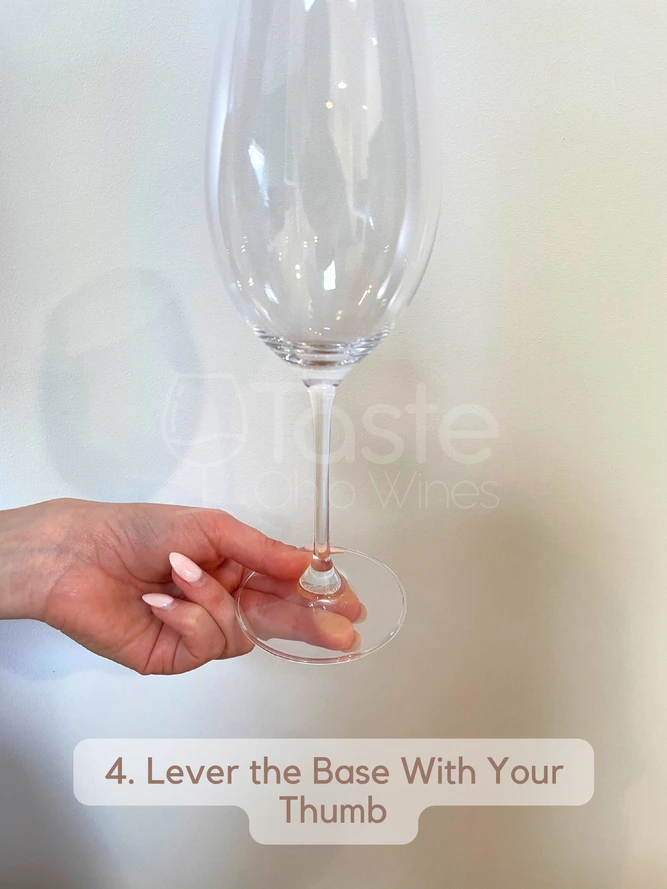
This method is unique because it doesn’t include the stem at all. However, it requires holding the base using three fingers, which may be tricky for some to get right. Follow these steps to get started:
- Place your index finger and middle finger on the base’s bottom
- Put your thumb over the base’s top and pinch slightly
- Rest your other two fingers curled up inside of your palm
- Practice this method before using it socially
We strongly suggest practicing this technique and mastering it before using it in public.
It’s the least stable technique, though getting it down right can make you look pretty elegant.
5. Five-Finger Holding Method
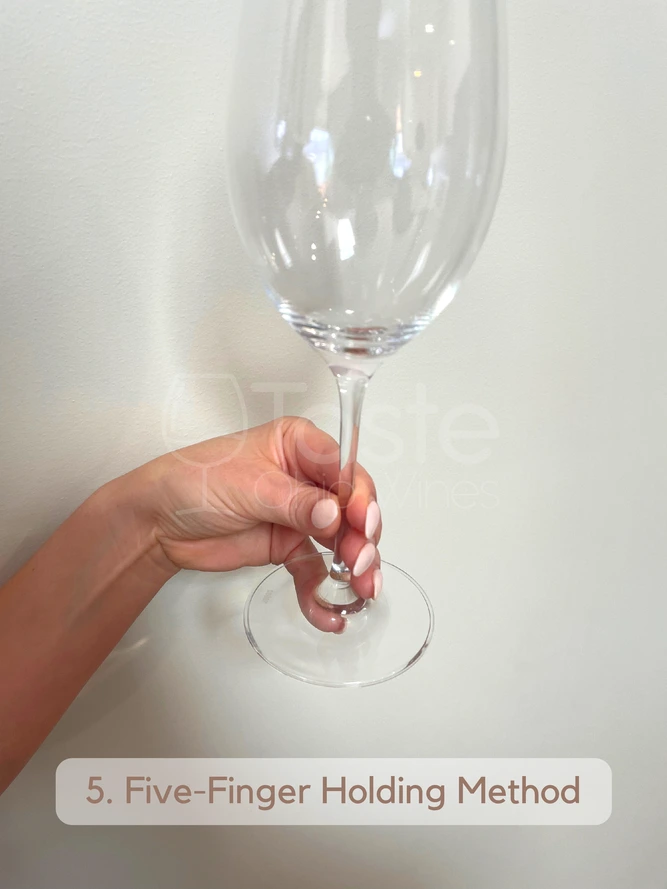
If for any reason, you feel uncomfortable with these techniques, this method can provide maximum stability for your glass. You use all your fingers using these steps:
- Place your pointer, middle, and ring finger on one side of the glass stem
- Pinch the stem with your thumb, using the other fingers to balance
- Place your pinkie underneath the base for extra stability
This method does look somewhat awkward compared to the more elegant options, so it should be used only if you’re just learning how to hold a stemmed wine glass properly.
How to Hold a Stemless Wine Glass
While stemless wine glasses aren’t used as often as stemmed options, there are times when you might want to bust them out.
For example, they typically go best with red wine and are usually easier to maintain. People often take them out for their red drinking parties or when polishing off their nightcap.
There’s mostly just one way to hold a stemless wine glass, though we included bonus options to try.
1. Hold the Glass Towards the Base
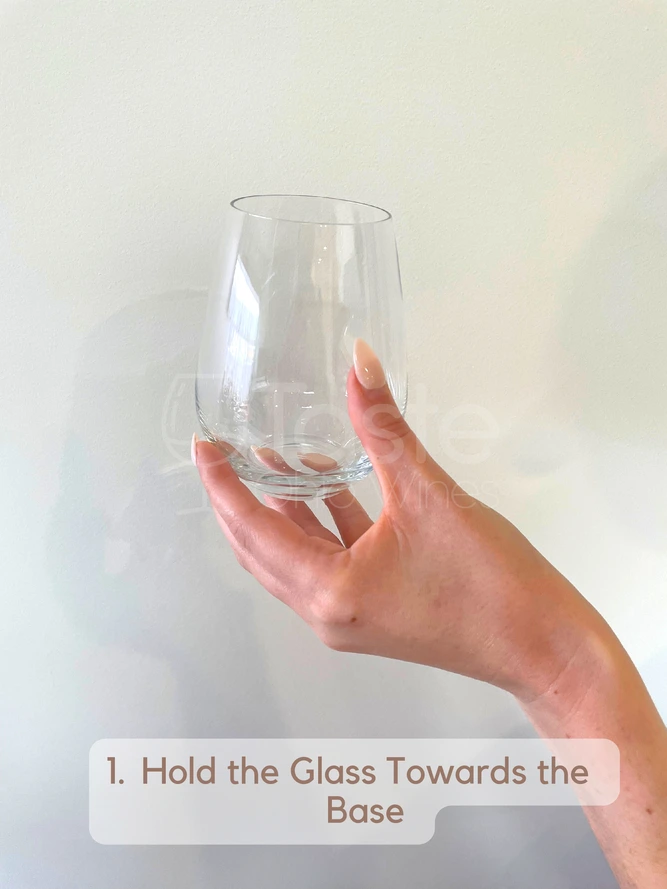
When using a stemless wine glass, you’re more likely to serve red wine because the temperature change won’t matter nearly as much as it does with white. In addition, this technique gives you maximum stability with your glass:
- Wrap your thumb, index, and middle finger near the glass base
- Put the other two fingers beneath the base to support it
- Alternately, curl your other two fingers away from the glass
This method minimizes how much heat transfer you get in your glass but can still exchange a small amount
It’s hard to avoid this heat transfer when using stemless glasses, so be prepared for that.
2. Grip the Glass Center
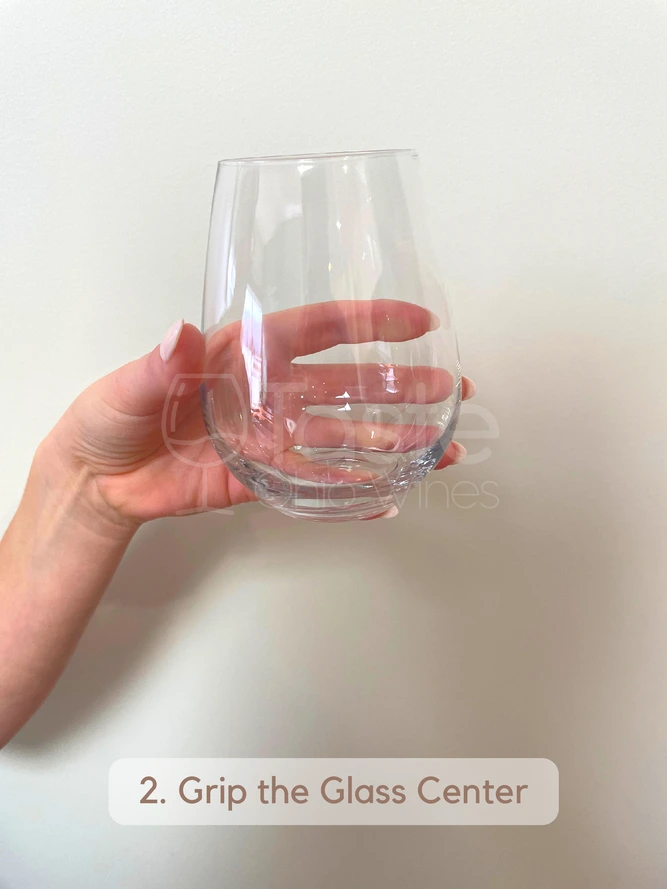
If you don’t care about heat transfer or are drinking a red wine where the transfer doesn’t matter as much, you can hold the glass center. While not recommended on wine-drinking occasions, it can be helpful if you’re feeling relaxed at home:
- Place your thumb and pointer around the glass center
- Wrap your hand around the glass and comfortably position your other fingers
- Use your small finger on the glass base for extra support
As we suggested, it’s probably best to use this method when you’re at home in your PJs and just want to relax.
It might also be a good option when casually drinking with buddies who don’t care about wine etiquette.
3. Grab the Rim
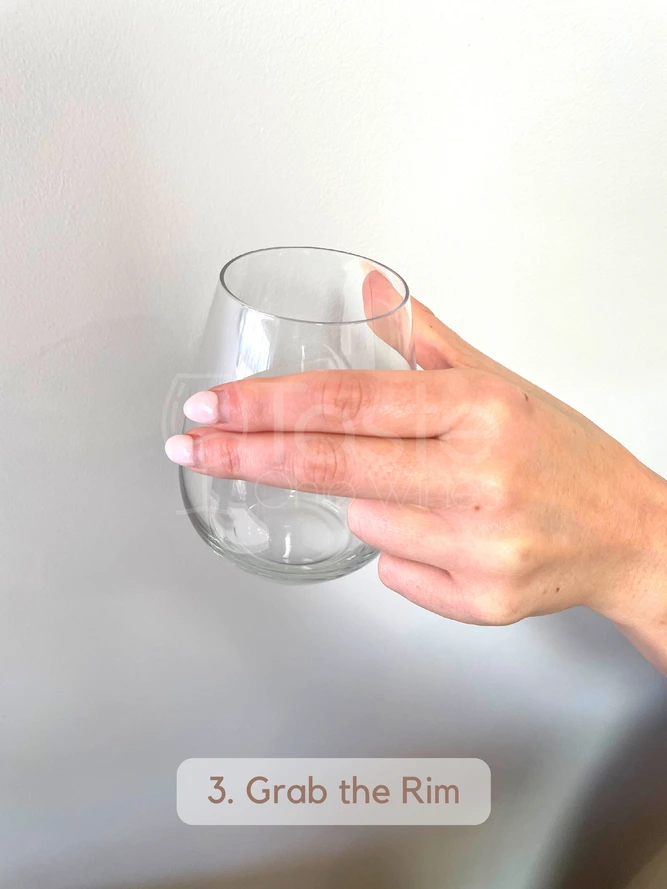
Though this method isn’t exactly congruent with wine etiquette techniques, you may try it if you want to minimize temperature changes in your wine. Follow these steps to master this method:
- Wrap the rim above the wine using your thumb and middle fingers
- Curl your other fingers up into your palm
This method is helpful if you want to avoid warming up your white wine.
Though white wine is rarely served in stemless glasses, this option may help keep your wine balanced if you have no choice.
Wine Etiquette and Customs You Should Know
As a bonus, we’re including some important wine etiquette rules and customs that can help you whenever you’re enjoying some wine.
These simple rules typically help make your drinking experience more enjoyable by ensuring that you fit in with everybody else when drinking wine publicly.
In this way, you should feel comfortable enjoying wine in whatever way you want.
Known When to Rest Your Glass
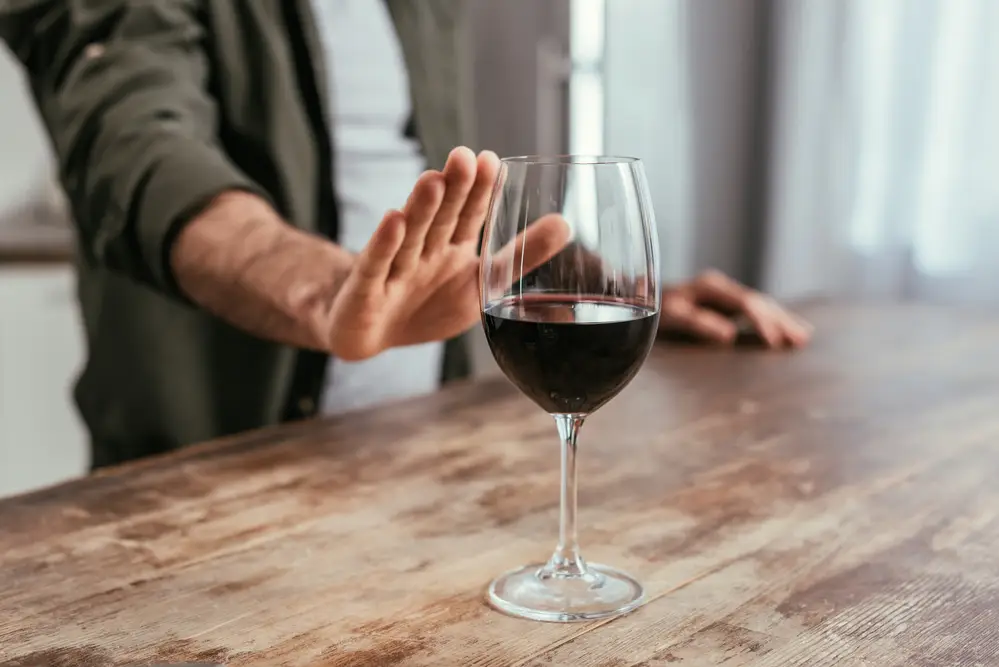
Here’s something that we know many people don’t get: when to rest your wine glass.
You don’t have to constantly hold your glass while enjoying wine with friends or at a tasting.
This simple concept is essential because holding your glass may affect your wine quality, even with a stem.
Instead, put your glass down between sips on either glass or rest it on your other hand. Both techniques are okay to use.
Always Sip From the Same Spot
If possible, try to sip your wine from the same spot.
This process helps to improve the appearance and scent of your wine by creating drinking consistency.
However, here’s another thing to consider: unnecessarily moving your drinking spot can cause streaks on your glass that may be pretty unappealing.
Why does this matter? Your sense of taste and enjoyment is intricately linked with your sense of sight.
Think about it. Are you more likely to enjoy wine from a glass that is clear and smudge free? Or from one that has fingerprints and lip marks (with the possibility of lipstick) all over the rim?
Don’t Fill Your Glass All the Way
Have you ever wondered why people only fill their wine glass partway? Well, it’s a standard etiquette rule to keep the glass only partially filled to minimize the risk of spillage.
Actually, a standard pour (5oz) looks like the glass is only half full. But that’s specifically how wine glasses are designed to be.
It’s also a way to control alcohol input. When your glass is only half-full (or is that half-empty?), you simply won’t drink nearly as much.
You can probably go a little over one-third for red wines and halfway for whites, but no more than that.
Other Etiquette Rules to Consider
When drinking wine with others, consider following these etiquette rules:
- Always “swish and sniff” before drinking your wine
- When giving wine as a gift, don’t expect the host to serve it unless they want to
- Pick wines that match the food’s sauce, rather than the main ingredient
- Don’t demand a wine refill but wait for the host to offer
- Never, ever, EVER, serve in plastic or Styrofoam containers
- Try to finish a wine, even if you don’t enjoy it, to avoid offending the host
- Shrimp Cocktail (and More) Wine Pairing Guide - 09/06/2022
- What Wine Serving Sizes Look Like: Standard Size and More - 08/06/2022
- How Much Sugar is in Wine: Glass and Bottle Sugar Content - 08/06/2022






